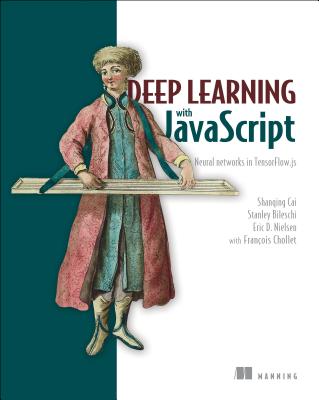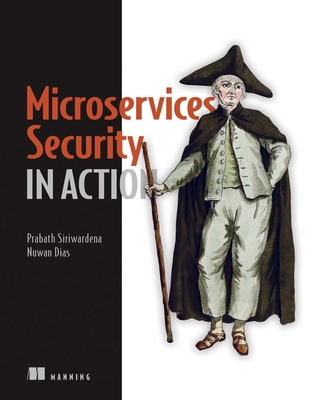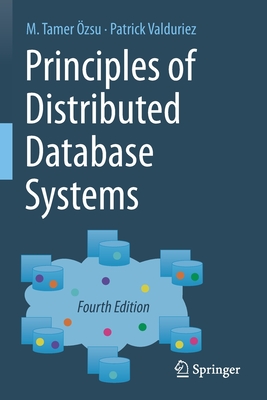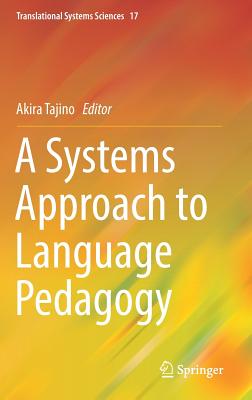Pedagogical Patterns: Advice For Educators
暫譯: 教學模式:給教育工作者的建議
Joseph Bergin
- 出版商: W. W. Norton
- 出版日期: 2012-08-21
- 售價: $970
- 貴賓價: 9.5 折 $922
- 語言: 英文
- 頁數: 190
- 裝訂: Paperback
- ISBN: 1479171824
- ISBN-13: 9781479171828
-
相關分類:
專案管理 PM
海外代購書籍(需單獨結帳)
買這商品的人也買了...
-
 Arduino 官方正版 Genuino 101
Arduino 官方正版 Genuino 101$1,700$1,700 -
 Raspberry Pi 3 Model B+ (UK製)
Raspberry Pi 3 Model B+ (UK製)$4,620$4,389 -
 JVM Performance Engineering: Inside OpenJDK and the HotSpot Java Virtual Machine (Paperback)
JVM Performance Engineering: Inside OpenJDK and the HotSpot Java Virtual Machine (Paperback)$1,980$1,881 -
 晉昇軟體最高殿堂:Jenkins2 持續整合大師之路
晉昇軟體最高殿堂:Jenkins2 持續整合大師之路$600$474 -
 $1,320Deep Learning with JavaScript: Neural Networks in Tensorflow.Js
$1,320Deep Learning with JavaScript: Neural Networks in Tensorflow.Js -
 JavaScript 技術手冊
JavaScript 技術手冊$560$476 -
 Building a Future-Proof Cloud Infrastructure: A Unified Architecture for Network, Security and Storage Services (Paperback)
Building a Future-Proof Cloud Infrastructure: A Unified Architecture for Network, Security and Storage Services (Paperback)$1,998$1,898 -
 $1,584Microservices Security in Action
$1,584Microservices Security in Action -
 Principles of Distributed Database Systems, 4/e (Paperback)
Principles of Distributed Database Systems, 4/e (Paperback)$2,790$2,651 -
 $2,280Parallel and High Performance Computing (Paperback)
$2,280Parallel and High Performance Computing (Paperback) -
 $2,070Multithreaded JavaScript: Concurrency Beyond the Event Loop
$2,070Multithreaded JavaScript: Concurrency Beyond the Event Loop -
 Structure and Interpretation of Computer Programs: JavaScript Edition (Paperback)
Structure and Interpretation of Computer Programs: JavaScript Edition (Paperback)$2,680$2,546 -
 Understanding Distributed Systems : What every developer should know about large distributed applications, 2/e (Paperback)
Understanding Distributed Systems : What every developer should know about large distributed applications, 2/e (Paperback)$1,650$1,568 -
 建構機器學習管道|運用 TensorFlow 實現模型生命週期自動化 (Building Machine Learning Pipelines: Automating Model Life Cycles with Tensorflow)
建構機器學習管道|運用 TensorFlow 實現模型生命週期自動化 (Building Machine Learning Pipelines: Automating Model Life Cycles with Tensorflow)$580$458 -
 $2,052Mastering API Architecture: Design, Operate, and Evolve Api-Based Systems (Paperback)
$2,052Mastering API Architecture: Design, Operate, and Evolve Api-Based Systems (Paperback) -
 $2,233Functional and Concurrent Programming: Core Concepts and Features
$2,233Functional and Concurrent Programming: Core Concepts and Features -
 $1,767Functional Design: Principles, Patterns, and Practices (Paperback)
$1,767Functional Design: Principles, Patterns, and Practices (Paperback) -
 OpenTelemetry 入門指南:建立全面可觀測性架構(iThome鐵人賽系列書)【軟精裝】
OpenTelemetry 入門指南:建立全面可觀測性架構(iThome鐵人賽系列書)【軟精裝】$750$585 -
 Learning Systems Thinking: Essential Nonlinear Skills and Practices for Software Professionals (Paperback)
Learning Systems Thinking: Essential Nonlinear Skills and Practices for Software Professionals (Paperback)$1,995$1,890 -
 $1,663Collaborative Software Design: How to Facilitate Domain Modeling Decisions
$1,663Collaborative Software Design: How to Facilitate Domain Modeling Decisions -
 內行人才知道的機器學習系統設計面試指南 (Machine Learning System Design Interview)
內行人才知道的機器學習系統設計面試指南 (Machine Learning System Design Interview)$680$537 -
 $1,995Mastering Opentelemetry and Observability: Enhancing Application and Infrastructure Performance and Avoiding Outages
$1,995Mastering Opentelemetry and Observability: Enhancing Application and Infrastructure Performance and Avoiding Outages -
 Full Stack JavaScript Strategies: The Hidden Parts Every Mid-Level Developer Needs to Know (Paperback)
Full Stack JavaScript Strategies: The Hidden Parts Every Mid-Level Developer Needs to Know (Paperback)$2,062$1,953 -
 $2,205Beyond Vibe Coding: From Coder to Ai-Era Developer (Paperback)
$2,205Beyond Vibe Coding: From Coder to Ai-Era Developer (Paperback) -
 Building Event-Driven Microservices: Leveraging Organizational Data at Scale
Building Event-Driven Microservices: Leveraging Organizational Data at Scale$2,328$2,205
相關主題
商品描述
Patterns are not step-by-step recipes. Each of these offers a format and a process for transferring knowledge that can then be used by a variety of different teachers in many different ways. While most of the authors are involved in some aspect of computing and informatics, and so the examples are mostly drawn from those fields, much of the advice is general enough to be applied to other disciplines. The advice is not restricted to formal education, but has been used in various training scenarios as well.
Most educators and trainers are not taught how to teach. Rather, they often find themselves teaching by accident. Typically, a person with a skill that is in demand, such as a particular programming language, will be asked to teach it. People assume that if the person is good in this programming language, she will be good at teaching it. But knowing the subject matter is very different from knowing how to teach it. Effectively communicating complex technologies is often a struggle for information technology instructors. They may try various teaching strategies, but this trial and error process can be time-consuming and fraught with error. Advice is often sought from other expert instructors, but these individuals are not always readily available. This creates the need to find other ways to facilitate the sharing of teaching techniques between expert and novice teachers.This is the goal of the Pedagogical Patterns Project. Pedagogy is a term that refers to the systematized learning or instruction concerning principles and methods of teaching. Patterns provide a method for capturing and communicating the deep knowledge in a field.
As an example, imagine that you are looking for an effective way to teach message passing to experienced programmers in a weeklong industry course. A friend who is teaching a semester-long object technology course to traditional age university students has found an effective technique. He shares it with you without dictating the specific implementation details. This allows you to use your own creativity to implement the technique in a way that is most comfortable for you and most useful for your industry students. This is the essence of patterns: to offer a format and a process for sharing successful practices in a way that allows each practice to be used by a variety of people in many different ways.This pattern language contains patterns from the Pedagogical Patterns effort, which has been ongoing for over ten years. They have been revised and rewritten in Alexandrian form in order to support the integration into a pattern language.
The currently available patterns focus on a classroom situation at beginners to advanced level. The editors and authors are a mix of industrial trainers and university educators with a wealth of experience. Some teach small groups face to face and others teach huge courses delivered over the internet. Everything here is useful for secondary education onwards. The patterns in this pattern language use a form similar to the one used by Christopher Alexander in his book A Pattern Language. This book introduced patterns to the world of architecture, from whence it has spread throughout the computing and educational disciplines.
商品描述(中文翻譯)
這本模式集提出了一些成功的技術,以協助教學和學習,特別是在技術科目方面。對於專業教育工作者來說,這些模式可能看起來顯而易見,甚至微不足道,因為他們已經經常使用這些模式。但對於那些剛開始教學的人來說,這些模式提供了一種獲得經驗豐富教師深厚知識的方法。
模式並不是逐步的食譜。每一個模式都提供了一種格式和過程,用於知識的傳遞,然後可以被各種不同的教師以多種不同的方式使用。雖然大多數作者都參與計算機和資訊學的某些方面,因此例子主要來自這些領域,但許多建議足夠通用,可以應用於其他學科。這些建議不僅限於正式教育,也已在各種培訓場景中使用。
大多數教育工作者和培訓師並沒有接受如何教學的訓練。相反,他們經常發現自己是偶然地進行教學。通常,一個擁有需求技能的人,例如某種特定的程式語言,會被要求教授這門課程。人們假設如果這個人在這種程式語言上表現良好,她就會擅長教學。但了解學科內容與知道如何教學是截然不同的。有效地傳達複雜技術對於資訊技術講師來說往往是一種挑戰。他們可能會嘗試各種教學策略,但這種試錯過程可能耗時且充滿錯誤。人們經常向其他專家講師尋求建議,但這些人並不總是隨時可用。這就產生了尋找其他方法以促進專家與新手教師之間分享教學技術的需求。這正是教學模式專案的目標。教學法是一個指涉系統化學習或教學原則和方法的術語。模式提供了一種捕捉和傳達某一領域深厚知識的方法。
舉個例子,假設你正在尋找一種有效的方法,在為期一週的行業課程中教導經驗豐富的程式設計師消息傳遞。一位朋友正在為傳統年齡的大學學生教授一學期的物件技術課程,他找到了一種有效的技術。他與你分享這個技術,而不強加具體的實施細節。這使你能夠運用自己的創造力,以最舒適和對你的行業學生最有用的方式來實施這個技術。這就是模式的本質:提供一種格式和過程,以分享成功的實踐,讓每種實踐可以被各種人以多種不同的方式使用。這個模式語言包含來自教學模式努力的模式,這項工作已持續了十多年。它們已被修訂並以亞歷山大形式重新編寫,以支持整合到模式語言中。
目前可用的模式專注於初學者到高級水平的課堂情境。編輯和作者是工業培訓師和大學教育者的混合,擁有豐富的經驗。有些人面對面教授小組,有些人則教授通過互聯網提供的大型課程。這裡的一切對於中等教育及以後都是有用的。這個模式語言中的模式使用了一種類似於克里斯多福·亞歷山大的《模式語言》一書中使用的形式。這本書將模式引入建築界,並從那裡擴展到計算機和教育學科。











